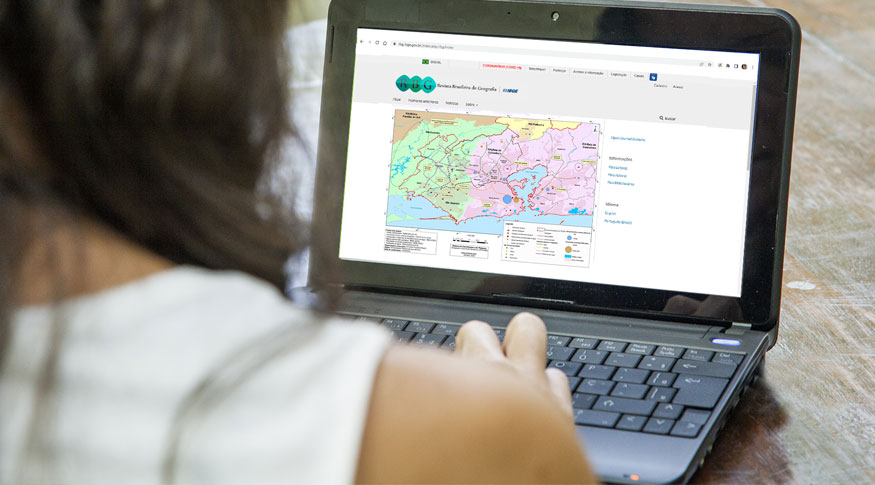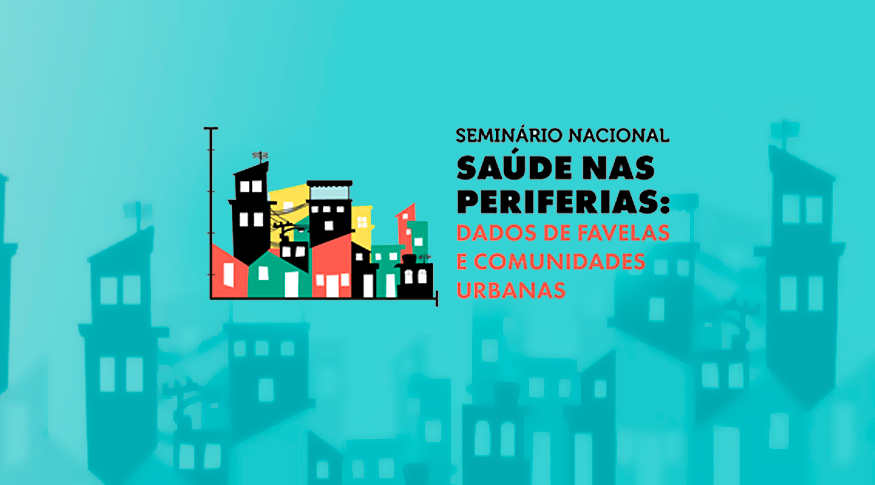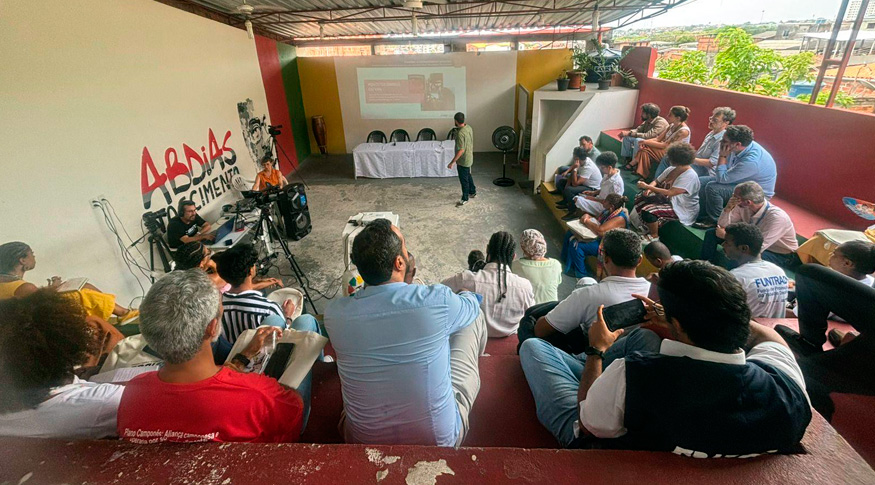Digital RBG
Special edition of the Brazilian Journal of Geography has interviews on the 2022 Census
April 28, 2022 10h00 AM | Last Updated: April 28, 2022 09h53 PM
Highlights
- The special edition of the Brazilian Journal of Geography has interviews with the IBGE Director of Geosciences, Claudio Stenner, and with the coordinator of the National Address List for Statistical Purposes (CNEFE), Wolney Cogoy de Menezes, about the the 2022 Census.
- The articles in this edition discuss the impacts of urbanization on rivers and problems in water supply networks.
- A new section titled RBG Selection republishes articles considered “comprehensive and up-to-date geographic studies.”
- By the end of May, the journal will be making available a new form of access to the entire material published in previous editions.

The IBGE releases today (28) the second edition of volume 66 of the Brazilian Journal of Geography (RBG).Because of the 2022 Census and as a way to celebrate the 200th anniversary of Brazil’s Independence, the publication is a special edition that, besides three articles, has two interviews, one with the IBGE Director of Geosciences, Claudio Stenner, and the other with the coordinator of CNEFE, Wolney Cogoy de Menezes, besides a new section titled “RBG Selection” and a group of works selected from the II International Pan American Symposium on Toponym, held between November 17 and 19, 2021
“This special edition has been conceived because we will have a Population Census in the same year we celebrate the 200th anniversary of our Independence, first record of Brazil as a State. It by means of the Census that we see the characteristics of this society,” says the executive director of the magazine,” Maria Lucia Vilarinhos.
Engineer Wolney Cogoy de Menezes is responsible for the structure of the National Address List for Statistical Purposes (CNEFE) and participated in three Population Censuses in more than 40 years working for the IBGE. In the interview, Wolney analyzes the major challenges of the main statistical operation in the country, technical transformations and the knowledge accumulated by the Institute for more than 80 years of surveys in the national territory, besides highlighting the reach of the IBGE, which is essential for a Census.
“Wolney is a professional who is about to start his fifth Census. The address list he is in charge of is a vital instrument for surveys and it represents a possibility of making the Census more agile, by means of its conduction on the Internet. The territorial reach of the IBGE is of fundamental importance in the case of surveys that aim at portraying the territory and society in a trustworthy way, at a level of detail that is very important in public management,” says Maria Lucia, who also calls attention to other aspects mentioned in the interview, such as technological changes and their relationship with other surveys by the Institute, such as the Continuous PNAD.
The director of Geosciences, Claudio Stenner, also gave an interview to the journal. He highlights the advances in the development of the operation for the 2022 Census, mainly those related to the application of questionnaires to be used in Traditional peoples and Communities and the creation of a Basis for Information about the Enumeration Areas (BIOS). This innovation allows the elaboration of an information database about the demands and necessities in the access to enumeration areas.
“Since he joined the IBGE, Stenner has worked on nationwide surveys, such as the Area of Influence of Cities, which offer a national view of the territory. This point of view is essential for working in the Census. One of the topics approached in the interview is the special questionnaire applied to Traditional Peoples and Communities. For example, extra questions appear in the enumerator’s equipment when they are in an area populated by indigenous populations, even in cases when the latter are out of the legally established territory.”
Another highlight of the interview is the urban Survey of Household Surroundings, which presents data about the existence of street lighting, forestation, pavement and other aspects of urban areas. “In the previous Census, the Survey of Territorial Information (LIT) was intended to describe spatial characteristics of subnormal clusters, such as occupation density and capacity of movement in the streets, whereas the survey of the surroundings included other data, such as wheelchair ramps and existence of sidewalks in other urban areas. The 2022 Census will investigate the combination of items from these two surveys for all the urban areas in the country,” says Maria Lucia.
Impacts of human actions on rivers are dealt with in one article
Besides the interviews, the journal presents three articles related to the geography field. The study “River styles of the Quintandinha (Petrópolis, RJ) basin: application of a geomorphological classification of rivers in a mountainous urban area,” by geographers André Souza Pelech (IBGE) and Maria Naíse de Oliveira Peixoto (UFRJ), has the objective of discussing the impacts or urbanization on the geomorphological characteristics of rivers. The two researchers had already published, in a previous edition, a paper about the impact of human action on rivers and urban areas.
“Researchers discuss the damage caused to the river profile by urbanization processes and how that affects the surrounding populations. The case of Petrópolis, who has gone through a tragic occurrence recently, in a unique example, but that condition is also observed, at a smaller scale, in other municipalities.
The work “Metropolization and water supply in Rio de Janeiro: mediation of technical systems of water infrastructure”, by Christian Ricardo Ribeiro (UFRJ), approaches the problem of technical systems that form water supply networks in the Rio de Janeiro state area. “That study maps out the structure of water supply networks in the metropolitan area of Rio de Janeiro and discusses the problems of water sources.”
The study “Interactions and spatial practices in the expansion of National Agriculture in Brazil: management of the Korin Agropecuária territory”, by Murilo Henrique Rodrigues de Oliveira and Darlene Aparecida de Oliveira Ferreira, approaches the spatial practices in territory management adopted by the company that is present in five states located in the Central-South area of Brazil. Both researchers come from UNESP, Rio Claro (SP) Campus.
There is also a section titles “RBG Selection”, in which, every four years, an article previously published by the journal will be chosen due to its depth, comprehensiveness, coverage and up-to-dateness of the geographic analysis provided, according to the view of the editorial council of the publication. The first one to be selected was “Mobility in the Metropolitan Area of Rio de Janeiro and Waterway Transportation: an analysis based on movement results of the 2020 Census”, by geographer Gabriel Teixeira Barros. The researcher also analyzed the dynamics of the area called Recôncavo da Guanabara in terms of tidal movement and sea currents, of the historical process of urban occupation and of the Evolution of transportation in the region, to discuss, based on data of the 2020 Census, the importance of waterway transportation there.
On May 26th, the journal will offer a new form of access to the entire material published in previous editions. This consultation will be available on the page of the publication and the user will be able to search published articles by key work, author’s name and title. Currently, only full editions are available.




















